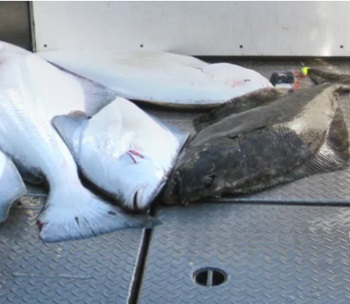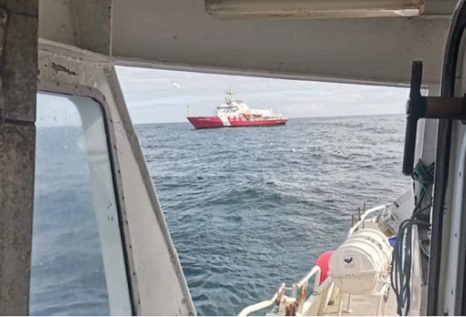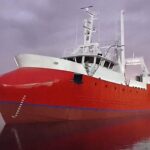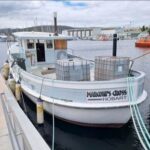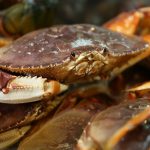Tag Archives: Atlantic halibut
Fishing group, N.S. fisherman happy with Canada-France halibut deal
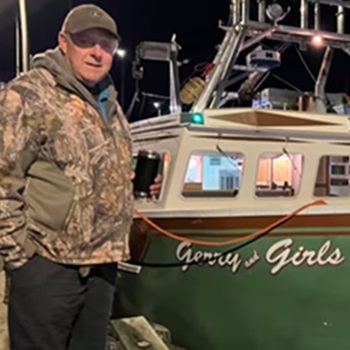 Canada and France have reached a deal to try to end a long-simmering dispute over halibut fishing on Canada’s Atlantic coast. In exchange for a three per cent share of the Canadian quota, French fishing vessels will fish outside Canadian waters and agree to have their catch monitored. According to Shelburne fisherman Gary Dedrick, French fishermen have been harvesting in Canadian waters outside the designated French fishing zone surrounding St-Pierre-Miquelon, France’s eight small islands off Newfoundland’s southern coast, and not limiting their catches. “They will be allowed to fish Atlantic halibut in their own territory and also outside 200 miles, but they won’t be able to fish in Canadian waters,” said Lapointe, who is looking to federal authorities to increase monitoring and catch reporting now that there’s a formal agreement. more, >>CLICK TO READ<< 14: 19
Canada and France have reached a deal to try to end a long-simmering dispute over halibut fishing on Canada’s Atlantic coast. In exchange for a three per cent share of the Canadian quota, French fishing vessels will fish outside Canadian waters and agree to have their catch monitored. According to Shelburne fisherman Gary Dedrick, French fishermen have been harvesting in Canadian waters outside the designated French fishing zone surrounding St-Pierre-Miquelon, France’s eight small islands off Newfoundland’s southern coast, and not limiting their catches. “They will be allowed to fish Atlantic halibut in their own territory and also outside 200 miles, but they won’t be able to fish in Canadian waters,” said Lapointe, who is looking to federal authorities to increase monitoring and catch reporting now that there’s a formal agreement. more, >>CLICK TO READ<< 14: 19
Canada announces deal with France on contentious Atlantic halibut fishery
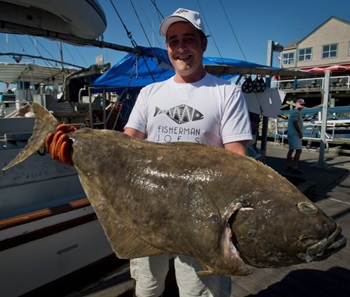 Months of negotiations have resulted in an agreement between Canada and France allowing fishers from a tiny archipelago near Newfoundland a portion of the annual Atlantic halibut catch, officials announced Monday. Fishers from the French territory of St-Pierre-Miquelon will be allowed three per cent of the total allowable catch, which is set each year by Canada, the federal Fisheries Department said in a statement. Ihe department has been working with France to reach such an agreement since 2016, the department said. “I am confident that we’ve reached an equitable agreement that will ensure the long-term health of the Atlantic halibut stock while supporting the economies and coastal communities of both Canada and France,” Fisheries Minister Diane Lebouthillie said. more, CLICK TO READ<< 15:02
Months of negotiations have resulted in an agreement between Canada and France allowing fishers from a tiny archipelago near Newfoundland a portion of the annual Atlantic halibut catch, officials announced Monday. Fishers from the French territory of St-Pierre-Miquelon will be allowed three per cent of the total allowable catch, which is set each year by Canada, the federal Fisheries Department said in a statement. Ihe department has been working with France to reach such an agreement since 2016, the department said. “I am confident that we’ve reached an equitable agreement that will ensure the long-term health of the Atlantic halibut stock while supporting the economies and coastal communities of both Canada and France,” Fisheries Minister Diane Lebouthillie said. more, CLICK TO READ<< 15:02
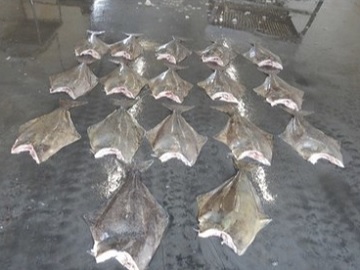
Investigation leads to 66 halibut fishing charges in Nova Scotia
As a result of a 24-month major case investigation in the Sambro area of Nova Scotia, Fisheries and Oceans Canada has laid 66 charges related to the illegal possession and sale of harvested halibut. On December 13, a total of 41 charges were laid at the Halifax Provincial Court for offences under the Fisheries Act and the Atlantic Fishery Regulations, 1985. This is in addition to a total of 25 charges which were laid on January 7, 2021. In total, eight individuals and five companies have been charged in relation to this investigation. >click to read< 16:42

Would throwing the big ones back keep Atlantic halibut fishery on a roll? DFO considers changing the rules!
The investigation is being undertaken at the request of companies that fish halibut using hook and line from the Grand Banks off Newfoundland to Georges Bank off southern Nova Scotia. They’d like to see it happen. “Releasing large halibut is something that fishermen will say, and I will say, that’s just logical, because the majority of the large halibut are females. But you really don’t know just what goes on after you release a large halibut like that,” said Gary Dedrick, a halibut fisherman from Shelburne, N.S., and a founding member of the Atlantic Halibut Council. “So this is where there is monitoring on the bottom and how long they live.” >click to read< 09:45
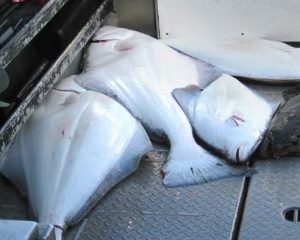
Review of Atlantic halibut survey raises sustainability questions
For more than two decades, Atlantic halibut fishermen have baited their hooks and dropped them to the ocean bottom off Nova Scotia and Newfoundland as part of a collaboration between the fishing industry and the Department of Fisheries and Oceans. The annual May to July halibut longline survey is used to predict halibut abundance in a thriving fishery worth $60 million. Dalhousie University biology student Isabelle Hurley wanted to know if the data told another story. She looked at what else was caught — so-called bycatch — in the survey between 1998 and 2016. >click to read<10:32
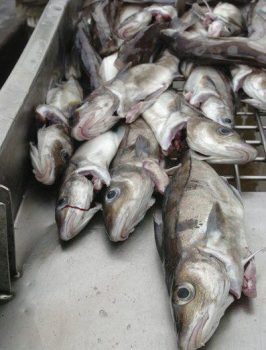
Groundfish quota changes up for debate
The proposed rule, called Framework 58, calls for increasing the commercial quota for Georges Bank cod by 15 percent, Georges Bank haddock by 19 percent and Georges Bank winter flounder by 6 percent for the new fishing season that is set to begin Wednesday. It also includes a 1 percent increase for witch flounder. That’s the good news. The bad news is that the proposed rule, published in the Federal Register, calls for a whopping 50 percent cut to the annual catch limit for Georges Bank yellowtail flounder, a 1 percent reduction in the quota Gulf of Maine winter flounder and a 3 percent cut to the catch limit for Atlantic halibut. >click to read<22:43
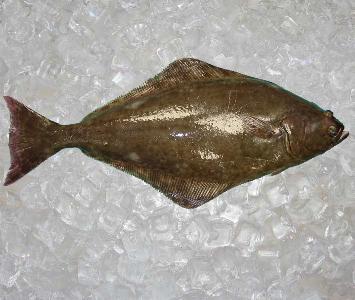
Maine: New halibut rules aim to keep fishery open
The Maine Department of Marine Resources has reminded harvesters with an Atlantic halibut endorsement of new state regulations designed to keep the state compliant with federal rules. The new state rules, enacted in April as emergency regulations and scheduled to become permanent in June, are designed to prevent state licensed harvesters from exceeding the allowable catch limit in state waters and contributing to an overage for the combined state and federal fishery. >click to read<10:26

Alaskan fishermen aren’t the only ones noticing the rise of Atlantic halibut
As prices and demand for Pacific halibut have fallen in Alaska, commercial fishermen say a new Canadian competitor is to blame. Since 2012, Canadian imports of fresh Atlantic halibut have grown roughly 60 percent. Historically, Atlantic halibut has not competed with its close relative on the West Coast since New England and Canadian fishermen overfished stocks in the late 1880s. But as the catch continues to grow north of the border, fishermen in New England are working towards restarting a fishery in U.S. waters.,, “A lot of those boats are fishing on the U.S.-Canadian line and having very good results, and it’s been going on for a while,” Mike Russo said, a New England-based commercial fisherman. >click to read<16:03
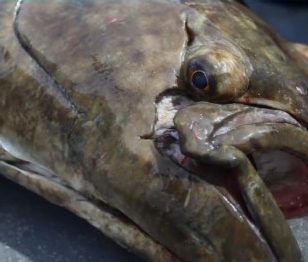
Homer halibut fishermen facing more competition from the East Coast
The International Halibut Commission, or the IPHC, will kick off its annual meeting in Portland Monday. The international regulatory body is expected to slash the total allowable catch of halibut on the West Coast by 24 percent due to declining stocks. With potentially less Pacific halibut on the market, prices are likely to increase, but a new direct competitor on the East Coast may hamper the market’s ability to compensate for lower halibut stocks in Alaska. >click here to read< 16:33

Cape Cod fishermen have high hopes for halibut
On the U.S. side of the border Atlantic halibut are listed under the Endangered Species Act and fishermen are limited to one fish per trip. Less than a half a day’s steam to the east, the same fish is the poster child for sustainable fishery management and generates between $100 million and $200 million a year for Canadian fishermen. It’s a divergence shrouded in mystery as deep as the ocean on either side of the Hague Line, the boundary that separates the two nations out to the 200 mile limit of their exclusive economic zones. The target date to rebuild the U.S. Atlantic halibut stock to healthy levels is 2056, nearly 40 years in the future. click here to read the story 07:49
Are Maine halibut headed for trouble?
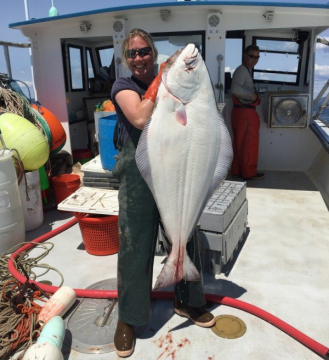 Go to Scales, an elegant waterfront restaurant on a Portland pier, and a plate of pan-roasted halibut with hazelnuts, brown butter and new potatoes will cost you $38, tax and tip extra. Go down to the dock in Lubec or Stonington during May and June, when Maine fishermen are allowed to harvest halibut from state waters inside the three-mile limit, and $38 would buy you about 5 pounds of halibut, if you could buy less than a whole fish directly off the boat. And that’s the problem. Over the decade between 2006 and 2015, the last year for which the Department of Marine Resources has figures, the boat price for halibut increased some 44 percent and landings increased from just 30,018 pounds worth about $139,000 to more than 93,000 pounds that brought fishermen some $623,000. Now federal fisheries regulators are saying that halibut may be in trouble. Read the story here 12:14
Go to Scales, an elegant waterfront restaurant on a Portland pier, and a plate of pan-roasted halibut with hazelnuts, brown butter and new potatoes will cost you $38, tax and tip extra. Go down to the dock in Lubec or Stonington during May and June, when Maine fishermen are allowed to harvest halibut from state waters inside the three-mile limit, and $38 would buy you about 5 pounds of halibut, if you could buy less than a whole fish directly off the boat. And that’s the problem. Over the decade between 2006 and 2015, the last year for which the Department of Marine Resources has figures, the boat price for halibut increased some 44 percent and landings increased from just 30,018 pounds worth about $139,000 to more than 93,000 pounds that brought fishermen some $623,000. Now federal fisheries regulators are saying that halibut may be in trouble. Read the story here 12:14
Atlantic Halibut under Council scrutiny as Maine’s catch increases
 Federal fishing regulators say they are looking to change the way they manage Atlantic halibut in the wake of a surge in catch of the fish. The government lists Atlantic halibut as “overfished” and conservationists want to protect it. But many fishermen say the catch is up because the stock has been rebuilt over recent years. East Coast fishermen caught more than 215,000 pounds of Atlantic halibut in 2015 in the most productive year of fishing for the flatfish since 1972. Catch of the fish in nearshore Maine waters is helping drive the increase, regulators say. The regulatory New England Fishery Management Council decided last month to review management of halibut, which is popular with diners and chefs for its thick, meaty steaks. Exactly what form regulation changes could take isn’t yet known. We’ve identified that this is an issue, and this will be a priority for 2017,” Janice Plante, a spokeswoman for the council, said. Read the story here 08:35
Federal fishing regulators say they are looking to change the way they manage Atlantic halibut in the wake of a surge in catch of the fish. The government lists Atlantic halibut as “overfished” and conservationists want to protect it. But many fishermen say the catch is up because the stock has been rebuilt over recent years. East Coast fishermen caught more than 215,000 pounds of Atlantic halibut in 2015 in the most productive year of fishing for the flatfish since 1972. Catch of the fish in nearshore Maine waters is helping drive the increase, regulators say. The regulatory New England Fishery Management Council decided last month to review management of halibut, which is popular with diners and chefs for its thick, meaty steaks. Exactly what form regulation changes could take isn’t yet known. We’ve identified that this is an issue, and this will be a priority for 2017,” Janice Plante, a spokeswoman for the council, said. Read the story here 08:35
Maine: Two weeks remain for ‘fishing for the halibut’
 SOUTHWEST HARBOR — With a May 1 to June 30 season, Atlantic halibut can be a boon to lobstermen before the summer lobster season gets busy. Some are multitasking, checking their halibut trawls in between trips to get their lobster traps in the water. Home and restaurant cooks like the fish for its firm texture; the flesh doesn’t fall apart the way it does with haddock or other common groundfish. Halibut trawls have hooks on them, which must be circle hooks of a certain size. “We set out a trawl with about 80 hooks on it,” said Holly Masterson, sternman on Mike Carroll’s F/V Molly Hock, of a late May day when they caught a 49-pound, 50-inch halibut. Read the story here 14:04
SOUTHWEST HARBOR — With a May 1 to June 30 season, Atlantic halibut can be a boon to lobstermen before the summer lobster season gets busy. Some are multitasking, checking their halibut trawls in between trips to get their lobster traps in the water. Home and restaurant cooks like the fish for its firm texture; the flesh doesn’t fall apart the way it does with haddock or other common groundfish. Halibut trawls have hooks on them, which must be circle hooks of a certain size. “We set out a trawl with about 80 hooks on it,” said Holly Masterson, sternman on Mike Carroll’s F/V Molly Hock, of a late May day when they caught a 49-pound, 50-inch halibut. Read the story here 14:04






